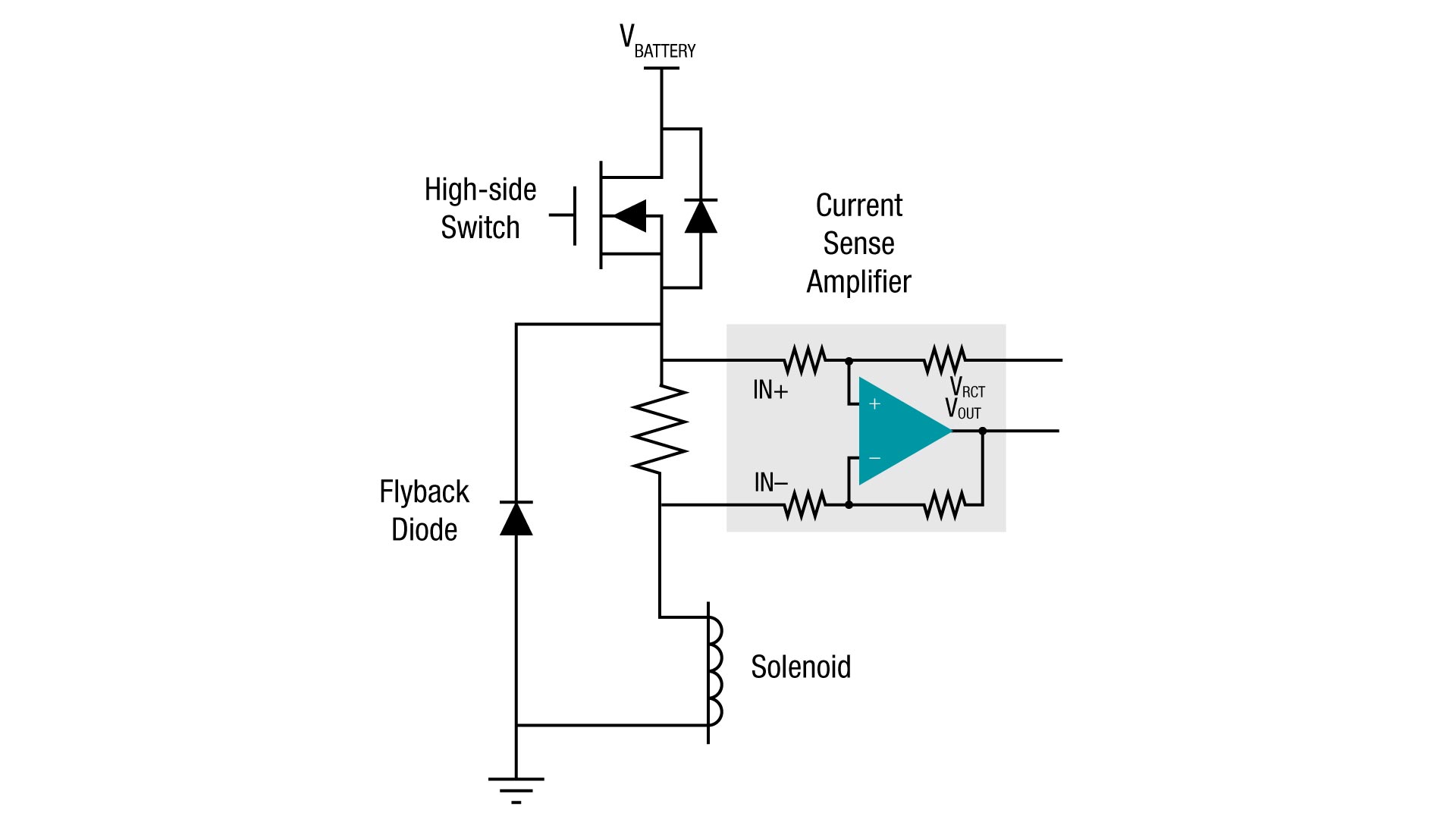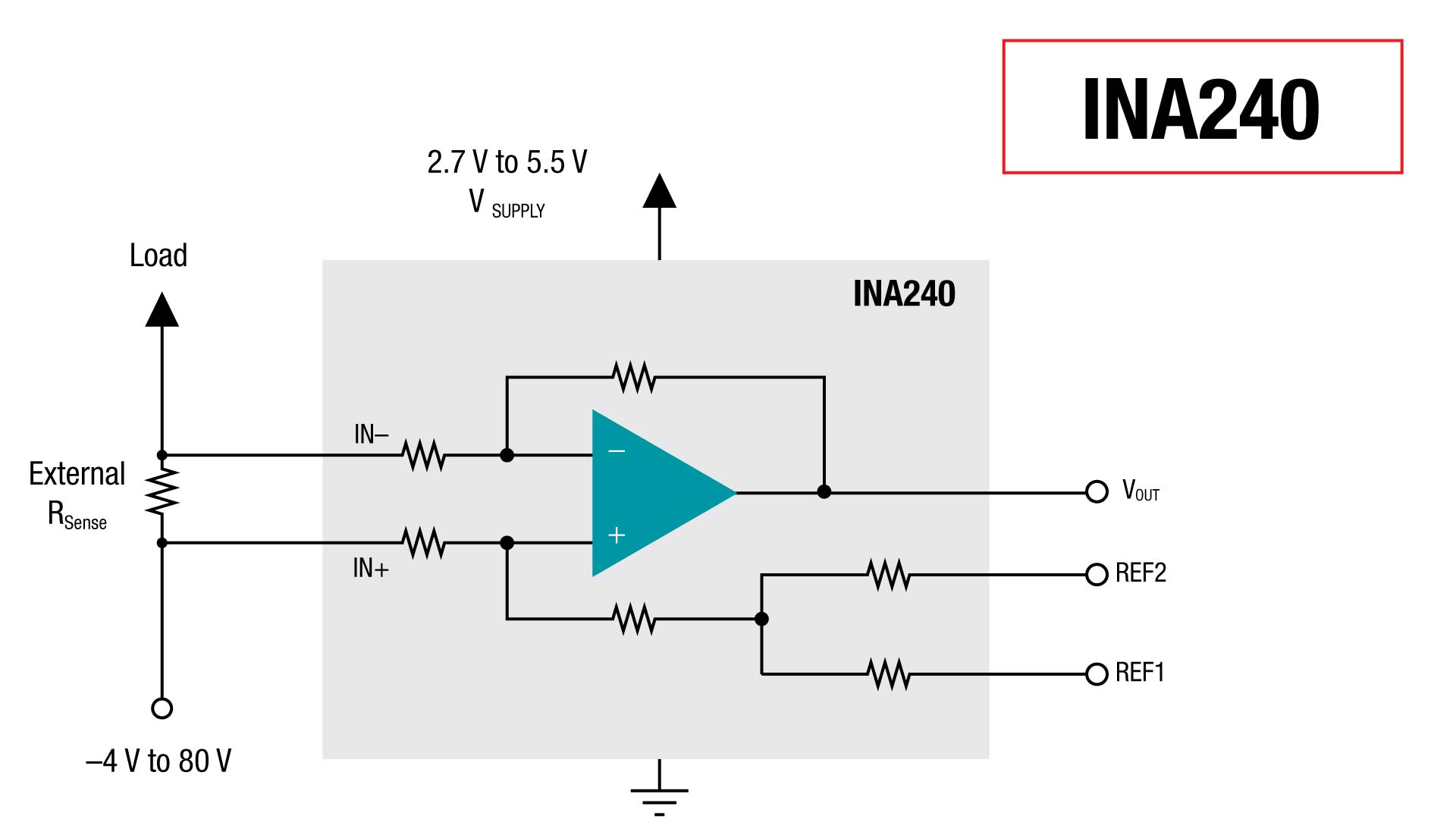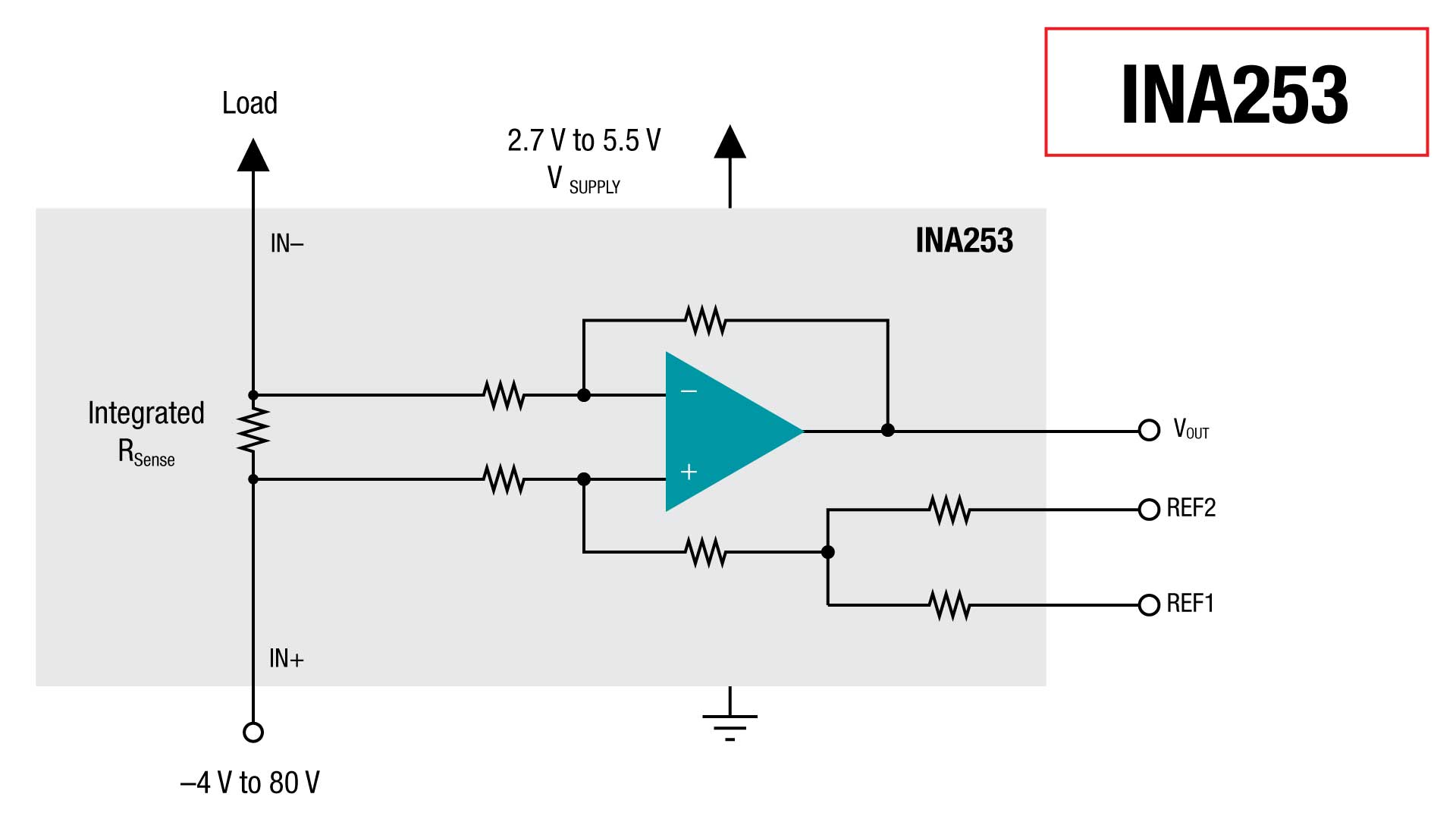SSZT383 november 2019 INA240 , INA240-Q1 , INA253 , INA253-Q1
During my first visit to the U.S., my brother and I drove from New York City to Columbus, Ohio. Although the 650-KM (400-mile) journey was long, our car’s automatic transmission and cruise control made the trip more comfortable. The effectiveness of an automatic transmission and cruise control relies on the precise control of proportional solenoids and motors, which is made possible with accurate current measurement.
Proportional solenoids convert electrical signals into a proportional mechanical force, which allows variance in armature position and force relative to the level of current. Proportional solenoids are used in automotive applications such as automatic transmissions, fuel injection systems, pistons and valves to accurately control position or flow. Controlling proportional solenoids precisely is highly dependent on the accuracy of the position estimation over the automotive temperature range. In general, measurement is used to provide position for proportional solenoids.
As shown in Figure 1, a shunt resistor is inserted in between the switch and the solenoid. The low-ohmic shunt is inserted in such a way to create a low resistance path as well as safely measure and accommodate recirculation current flows. An amplifier in a differential configuration or current sense amplifier is connected to the shunt to measure the current.
 Figure 1 Solenoid current
measurement
Figure 1 Solenoid current
measurementA pulse width modulation (PWM) signal operates the high-side switch. When the PWM is high, the battery connects to the solenoid and current flows. When the PWM is low, the battery disconnects from the solenoid and recirculation current flows through the flyback diode.
The control of the PWM frequency and duty-cycle percentage determines the resulting average current in the solenoid, which in turn controls the force applied to the actuator.
Sensing accuracy
Nominal current ranges for solenoids vary from device to device. Because of differing current range needs, current sense amplifier selection for these types of systems is critical as the necessary precise movement of the entire solenoid system depends on the accuracy of the current measurement.
| External shunt devices | Integrated shunt devices | |
|---|---|---|
| Suitability | Lower-current solenoids, because it is possible to interface with a higher-value external shunt resistor | Higher-current solenoids, as the integrated shunt is 2 mΩ. Choose based on your accuracy requirement. |
| Differential configuration register placement | Integrated | Integrated |
| Temperature drift | Shunt tolerances independent of device tolerance specifications, with considerable drift over the temperature range | Shunt tolerances included in device tolerance specifications, implying less drift over the temperature range |
| Resistor quality |
|
|
| Kelvin connection | External | Internal |
| Common-mode voltage | -4 V to 80 V | -4 V to 80 V |
| External shunt devices | Integrated shunt devices | |
|---|---|---|
| Benefits |
|
|
| Enhanced PWM rejection system-level benefit |
|
|
| Inclusion of flyback period in measurements. | Required wide common-mode range to accommodate the solenoid flyback period | Required wide common-mode range to accommodate the solenoid flyback period |
| Inductance | Low, in order to reduce voltage swings during state transitions | Low, in order to reduce voltage swings during state transitions |
| Price | Relatively lower price (excluding shunt price) | Moderately higher (including shunt price) |
| Relevant TI reference design | Reference Design for Automotive, Proportional-Solenoid Current Sensor | Automotive Proportional Solenoid Drive with Highly Accurate Current Sensor Reference Design |
Figure 2 and Figure 3 shows the configurations of shunt for external and internal configurations. In Figure 2 shunt is external to the device (INA240-Q1) and in Figure 3 shunt is internal to the device (INA253-Q1).
 Figure 2 External shunt configuration
with INA240
Figure 2 External shunt configuration
with INA240 Figure 3 Internal shunt configuration
with INA253
Figure 3 Internal shunt configuration
with INA253Maintaining solenoid current sensing accuracy
The impedance of a solenoid comprises inductive and series resistive components. The series resistance of the coil (typically copper) has a high-temperature drift of 4,000 ppm/°C. This high drift value may correspond to a 40% accuracy reduction in solenoid motion control over a 100°C range.
TI has two devices designed for solenoid current sensing applications:
- The INA240-Q1 enhances PWM rejection and has significantly lower offset and gain drifts over the temperature range, minimizing error at a 2-mA resolution.
- The INA253-Q1 is a low inductive 3-nH 2-mΩ integrated shunt with a drift at 15 ppm/°C. Placing the INA253-Q1 in series with the solenoid, the drift accuracy can decrease overall end-equipment system errors from 40% to 0.15%.
These devices have increased the effectiveness of our powertrain, motor-control circuits and automotive battery systems.
Conclusion
Automotive solenoids need higher accuracies to compensate for wider temperature ranges and increased drift as the temperature increases. Our current-shunt monitors enable accurate readings across the entirety of automotive temperature ranges.
Additional resources
- Check out the Automotive Shunt-Based ±500 A Precision Current Sensing Reference Design.
- Read Dan Harmon’s contributed article, “Signal Chain Basics #128: Optimizing solenoid control with precision current measurement.”